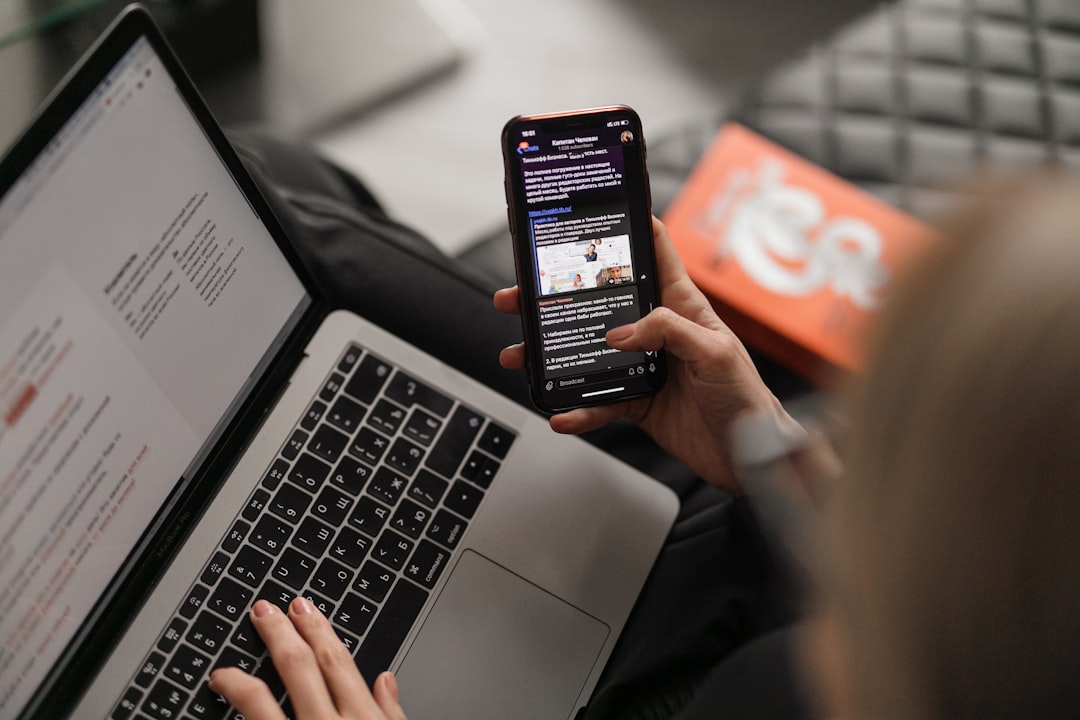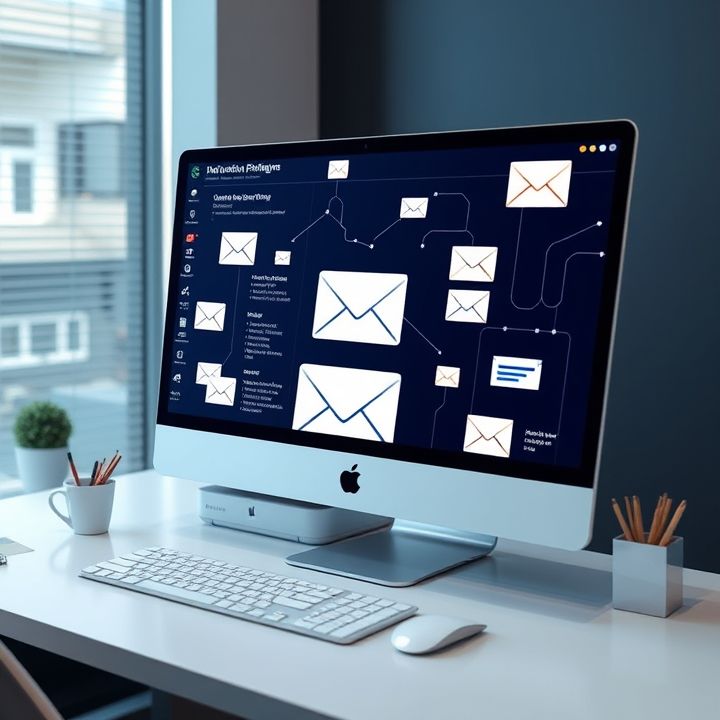Table of Contents
- Introduction
- Understanding the psychology behind urgency and scarcity
- Crafting subject lines that convey urgency to grab attention
- Incorporating time-sensitive offers to motivate quick decisions
- Using countdown timers to create a visual sense of urgency
- Highlighting limited stock or availability to fuel scarcity
- Personalizing messages to enhance the impact of urgency
- Leveraging social proof to reinforce scarcity
- Testing and optimizing urgency and scarcity strategies for maximum effectiveness
- Conclusion
- Frequently Asked Questions
Introduction
In the fast-paced world of digital marketing, grabbing your audience’s attention is more crucial than ever. What if we told you that mastering just two powerful psychological triggers could transform your emails from being ignored to irresistible, practically overnight? Welcome to the world of urgency and scarcity—two dynamic forces that hold the secret to skyrocketing your email success!
| Key Thoughts | Impact |
|---|---|
| Urgency | Encourages immediate action |
| Scarcity | Creates exclusivity and value |
Imagine being able to create a compelling call to action that doesn’t just urge your readers to click but compels them to race against time and grab what you’re offering. The secret doesn’t just lie in crafting persuasive messaging but in implanting a sense of urgency and showcasing scarcity to drive decision-making. Ready to unlock these secrets and revolutionize your email campaigns? Dive in—we’re about to reveal all.
Understanding the psychology behind urgency and scarcity
The psychology behind urgency and scarcity is rooted in fundamental aspects of human behavior that can significantly influence decision-making. Urgency creates a sense of immediate need or action. When individuals perceive that they must act swiftly to avoid missing out on a valuable opportunity, they are more likely to make quick decisions. This is known as the ‘fear of missing out’ or FOMO, a powerful psychological trigger that compels individuals to take action without delay.
Scarcity, on the other hand, is based on the principle that limited availability increases an item’s value or desirability. When people believe that a particular product or offer is scarce, they perceive it as more valuable and are more driven to obtain it. This perception is often amplified by the competitive nature of human behavior, as scarcity implies that not everyone will have access, creating a desire to be among the ‘chosen few.’
Leveraging these psychological principles in email marketing can significantly boost engagement and conversion rates by tapping into consumers’ innate responses to limited opportunities and time-sensitive offers.
Crafting subject lines that convey urgency to grab attention
Crafting subject lines that convey urgency is a powerful way to grab attention and encourage immediate action in your emails. A well-crafted subject line can be the deciding factor for whether your email gets opened or ignored. To infuse urgency into your subject lines, use strong, action-oriented words like ‘Act Now,’ ‘Limited Time,’ or ‘Don’t Miss Out.’ These phrases signal to the recipient that the message contains time-sensitive information.
Incorporating a sense of scarcity can also be impactful. Mentioning a limited stock or exclusive offer can create a fear of missing out, prompting recipients to act quickly. For example, ‘Only 5 Spots Left!’ or ’24-Hour Flash Sale!’ are compelling ways to entice readers into opening your email.
Personalization and specificity can further enhance the urgency. Addressing the recipient by name or tailoring the message to their recent activity can make the subject line more compelling. For instance, ‘John, Your Exclusive Offer Expires Tonight!’ adds a personal touch that can boost open rates. By thoughtfully leveraging urgency and scarcity in your subject lines, you not only capture attention but also drive the desired action from your audience.
Incorporating time-sensitive offers to motivate quick decisions
Incorporating time-sensitive offers in your emails is an effective strategy to encourage quick decision-making among recipients. This method plays on the principles of urgency and scarcity, prompting readers to act fast due to limited availability or restricted time frames. One powerful way to do this is by crafting exclusive, time-limited deals or promotions that highlight the constraints. For instance, phrases like ‘Only 24 hours left!’ or ‘Limited to the first 50 respondents!’ can create a sense of urgency, making the offer more enticing. It’s essential to be clear and direct about the timeframe or availability right from the email subject line to captivate the audience’s attention immediately.
Additionally, combining countdown timers within your email’s layout can visually emphasize the ticking time limit, enhancing the perceived immediacy. This technique effectively turns passive recipients into active participants by motivating them to engage before the opportunity expires. However, it’s crucial to ensure that these offers are genuine and not overused, as credibility is key in building trust and maintaining long-term customer relationships. Done right, time-sensitive offers can significantly boost click-through rates and conversions, ultimately enhancing engagement and securing spontaneous purchases or actions from your audience.
Using countdown timers to create a visual sense of urgency
Countdown timers are a powerful tool to instill a sense of urgency in your email marketing campaigns. By visually showcasing the limited time available to act, these timers can effectively encourage recipients to make quicker decisions. When a recipient opens an email and sees a countdown timer ticking away, it immediately alerts them to the imminent expiration of an offer or deadline. The human brain is naturally drawn to time-sensitive information, and the visual depiction of time diminishing creates a psychological impetus to respond promptly.
Implementing countdown timers is straightforward thanks to many email marketing platforms offering easy integration options. They can be used in various scenarios, such as highlighting a sale, promoting event registrations, or announcing last-minute deals. The sense of scarcity is bolstered as the countdown progresses, reinforcing the need to act before the opportunity vanishes. Such a visual cue can be the push a hesitant recipient needs to convert their interest into an action, whether it be making a purchase or signing up for an event.
Finally, countdown timers are not only effective in creating urgency but also in driving engagement. When coupled with compelling copy and a clear call to action, they become a vital part of a strategic marketing toolkit designed to drive immediate responses.
Highlighting limited stock or availability to fuel scarcity
Highlighting limited stock or availability is an effective strategy to create a sense of scarcity in your email marketing campaigns. This approach leverages the psychological principle that humans are more likely to desire something that is scarce or in limited supply. When recipients believe that an item is about to run out, they are more inclined to act quickly to secure the product before it’s too late. To implement this technique, you can incorporate phrases such as ‘Only a few left in stock’ or ‘Limited availability’ within your email content. These prompts can create urgency, prompting potential customers to make immediate purchasing decisions.
Additionally, including visuals such as countdown timers or dynamic stock indicators can further emphasize scarcity and encourage prompt action. When crafting your message, ensure that the information about limited stock is prominently displayed and easily noticeable to maximize its impact. However, it is crucial to use this technique authentically and sparingly to maintain consumer trust and avoid misleading your audience. By genuinely communicating scarcity, you can effectively boost engagement and conversion rates, creating a win-win scenario for both your customers and your business.
Personalizing messages to enhance the impact of urgency
Personalizing messages in email marketing is a powerful way to enhance the impact of urgency. By tailoring each message to the individual recipient, you increase engagement and make the call to action more compelling. Personalization can be as simple as including the recipient’s name in the subject line or body of the email, which can immediately grab attention and make the email feel more relevant. However, effective personalization goes beyond just using names. It involves understanding and utilizing the recipient’s browsing history, previous purchases, or expressed interests to craft messages that resonate on a personal level. For instance, recommending products similar to those they’ve shown interest in, or offering limited-time discounts on items they’ve viewed, creates a sense of urgency that feels tailored just for them. Moreover, using dynamic content to alter the message based on user behavior or preferences can significantly enhance the urgency’s effectiveness. By making recipients feel that the message is crafted uniquely for them, they are more likely to act quickly, especially if the email suggests that the opportunity is fleeting.
Leveraging social proof to reinforce scarcity
Leveraging social proof to reinforce scarcity in emails is a powerful strategy to drive immediate action from your audience. Social proof, the psychological phenomenon where people copy the actions of others, can amplify the effects of scarcity when used strategically. For instance, by highlighting the popularity of a limited-time offer, you create a sense of urgency paired with the reassurance that many others are also interested. This technique can be executed by including testimonials, ratings, or reviews in your emails, showcasing that the product or service is in demand and valued by others.
Another approach is to display real-time data, such as the number of people who are currently viewing the item or the number of products that have been sold in the last 24 hours. This not only highlights the scarcity of the item but also underscores that it is a sought-after product, making potential buyers more inclined to act quickly. Additionally, mentioning that a limited stock is available due to high demand further reinforces the desire to purchase before it’s too late. By integrating social proof with scarcity elements, you effectively create a compelling narrative that not only urges recipients to act swiftly but also builds trust in the value of the offer.
Testing and optimizing urgency and scarcity strategies for maximum effectiveness
Testing and optimizing urgency and scarcity strategies in emails is crucial for enhancing their effectiveness. Beginning with A/B tests allows marketers to assess different elements such as subject lines, call-to-action phrases, or even the timing of an email. An A/B test might compare an email with language like “Only 5 left!” against another that simply states “Limited quantities available.” By analyzing open rates, click-through rates, and conversion statistics, marketers can determine which wording best motivates their audience.
Another approach is to adjust the level of urgency or scarcity to match the target audience’s preferences. Some customers respond well to strict deadlines like “Offer ends tonight,” while others prefer gentle prompts like “Last chance to save this weekend.” Continual refinement based on customer feedback and behavioral data will lead to more effective campaigns.
Moreover, leveraging data analytics tools can help in understanding customer responses and optimizing future strategies. By collecting and analyzing this data, marketers can make informed decisions about which tactics work best for their audience.
Ultimately, transparency is key. The use of urgency and scarcity should be genuine and honest to maintain trust and credibility with recipients.
Conclusion
In conclusion, tapping into the psychological principles of urgency and scarcity can significantly enhance your email marketing strategy. By understanding how these elements influence consumer behavior, you can craft compelling content that grabs attention and motivates action. Effective subject lines, time-sensitive offers, and countdown timers are crucial tools in creating a sense of immediacy, while emphasizing limited availability further fuels the desire to act quickly. Personalizing messages and leveraging social proof not only strengthen these psychological triggers but also build trust and authenticity with your audience. Implementing these strategies requires thoughtful execution and ongoing optimization through testing and data analysis, ensuring that your campaigns remain impactful and credible. When used ethically and strategically, urgency and scarcity can transform your email marketing efforts, leading to increased engagement and conversion rates, ultimately driving success overnight.

